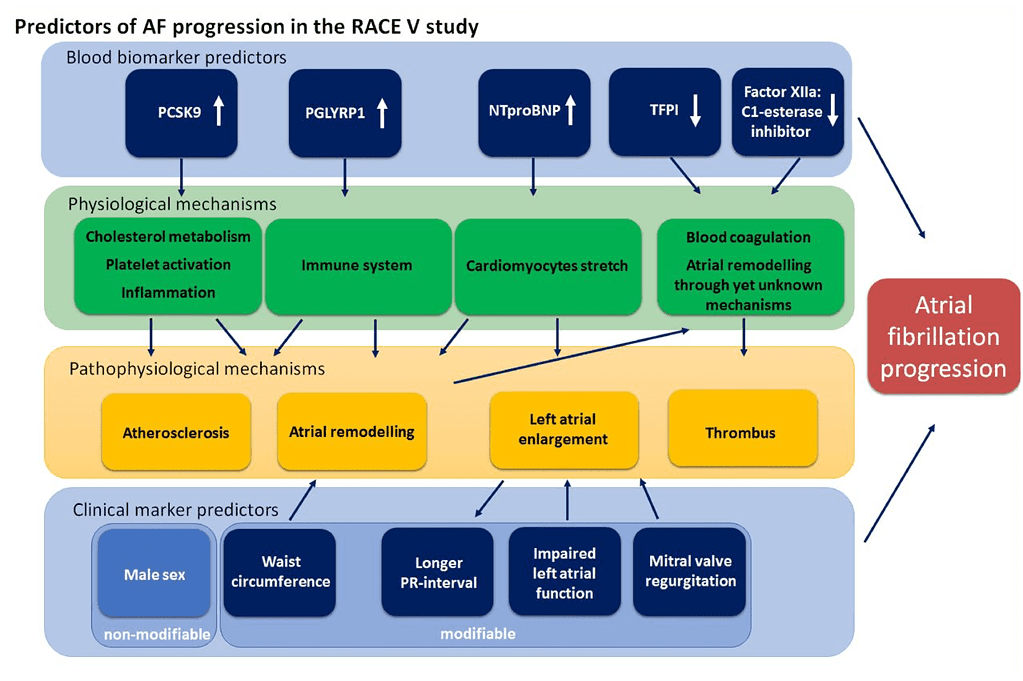By Dr Timothy Swinn
A study recently published in Heart has used continuous rhythm monitoring to establish risk factors for atrial fibrillation (AF) progression. Nguyen et al1 used data from the “Reappraisal of AF: Interaction Between HyperCoagulability, Electrical Remodelling, and Vascular Destabilisation in the Progression of AF” (RACE V) study to conduct a prospective multicentre study in patients with proven AF with LINQ implantable loop recorders in situ. 417 patients were included and were extensively phenotyped at baseline, including echocardiographic features and biomarkers. Patients were monitored for progression of AF (as defined by progression to permanent or persistent AF or a >3% increase in AF burden) and following this multivariate analysis was conducted to create a predictive model. The cohort had a median follow up of 2.2 years. The overall rate of AF progression was 5.5% per year. Predictive factors included male gender, waist circumference, lengthening PR interval, impaired contractility of left atrium, and mitral regurgitation. The C-statistic of the model improved from 0.709 to 0.830 by adding in biomarkers. Specifically high NT-proBNP, high proprotein convertase subtilisin/kexin type 9 (involved in cholesterol homeostasis), high peptidoglycan recognition protein 1 (involved in immune response and atherosclerosis), low factor XIIa:C1-esterase inhibitor and low tissue factor pathway inhibitor (both molecules inhibit the coagulation cascade).
Whilst the risk predictor in this instance requires validation and is likely too complex to be put into clinical practice, measuring AF progression using continuous monitoring allows greater assessment of variables such as AF burden, which can be difficult to measure using interrupted monitoring. This study design may be useful in further research around AF and other arrhythmias.

References
- Nguyen B, Weberndorfer V, Crijns HJ, et al Prevalence and determinants of atrial fibrillation progression in paroxysmal atrial fibrillation Heart Published Online First: 20 July 2022. doi: 10.1136/heartjnl-2022-321027

